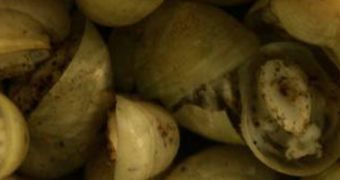Scientists conducting a study of the ocean floor in the northeastern Pacific Ocean were surprised to discover 38 deep-sea limpets of the species Lepetodrilus gordensis attached to their submarine, Alvin. Previously, scientists thought that the pressure difference was a barrier against these species.
Such organisms live at the bottom of the ocean, under extreme darkness, temperatures and pressure, around hydrothermal vents that release toxic gases from our planet's mantle. No one believed that they could migrate to the surface, while enduring the equivalent of human decompression sickness.
Yet, a paper published in the latest issue of the journal Conservation Biology described the amazement of scientists from the Field Museum of Natural History, in Chicago, who discovered the creatures attached to Alvin, e! Science News reports.
The findings are very worrying, since these organisms are invading species in the surface ecosystem. If conservation taught us anything, it is that introducing new players in a habitat usually ends in disaster for the native species.

 14 DAY TRIAL //
14 DAY TRIAL //